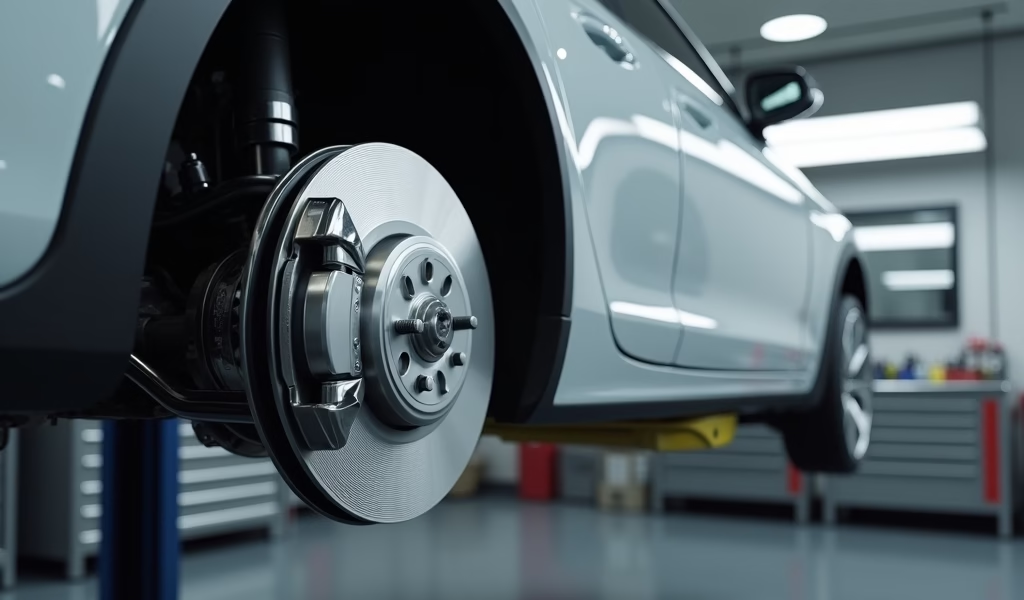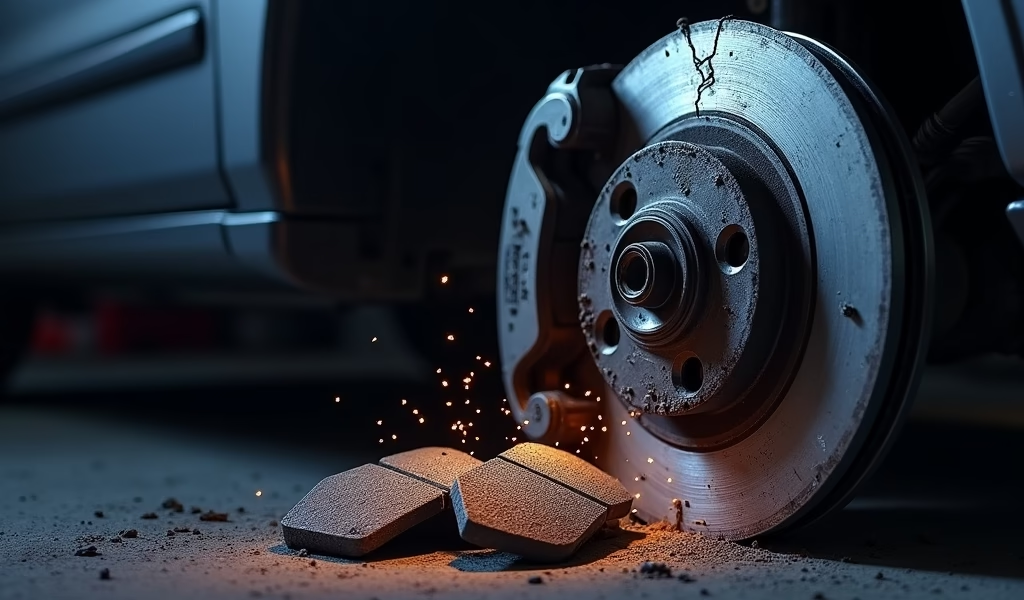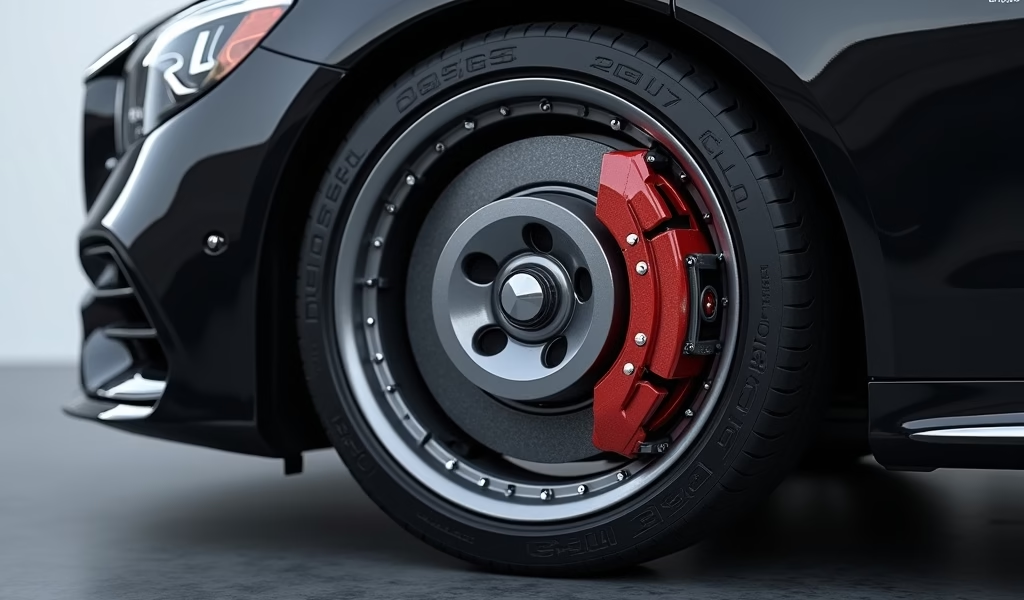Overview
Brake pad and rotor replacement typically costs $300-$800 per axle ($600-$1,600 for all wheels), with prices varying based on vehicle type, parts quality, and whether you choose DIY or professional installation. The article recommends regular inspection every 10,000 miles, replacement of pads every 30,000-70,000 miles and rotors every 50,000-70,000 miles, and emphasizes that while saving money is possible through comparison shopping and timing, brake maintenance should prioritize safety over cost-cutting.
Table of Contents
- Understanding Brake Pads and Rotors
- Average Costs Breakdown
- Factors Affecting Brake Replacement Costs
- DIY vs. Professional Replacement
- Signs You Need New Brake Pads and Rotors
- How to Save Money Without Sacrificing Safety
- Recommended Maintenance Schedule
- Conclusion
- Frequently Asked Questions
Understanding Brake Pads and Rotors
If you’re wondering how much should it cost to replace brake pads and rotors, you’re probably hearing that ominous squeal every time you tap the brake pedal. Your car’s brakes are like the bouncer at an exclusive club – they decide when the party stops, and you definitely want them performing at their best.
Brake pads and rotors work together like dance partners in perfect harmony. The pads, which are like the working hands of your braking system, press against the rotors (those shiny discs visible through your wheels) to create the friction needed to slow down or stop your vehicle. When you hit the brakes, these components heat up faster than gossip in a small town.
Over time, that friction wears down your pads and rotors like water over stone. Typically, brake pads need replacement every 30,000 to 70,000 miles, while rotors can last between 50,000 and 70,000 miles depending on driving habits and conditions. Ignoring worn brakes is like ignoring a toothache – it’ll only get worse (and more expensive) over time.
Understanding these components before heading to a mechanic is like learning a few words of French before visiting Paris – you’ll be much less likely to get taken for a ride. When it comes to professional brake service, knowledge truly is power, and potentially money saved.
Average Costs Breakdown
Let’s talk dollars and cents – the part everyone’s waiting for. How much should it cost to replace brake pads and rotors? Well, replacing these vital components costs about as much as a decent weekend getaway, but is considerably more important for your daily safety.
For brake pads alone, you’re looking at approximately $100 to $300 per axle, depending on your vehicle’s make and model. Think of brake pads as the shoes of your car – economy brands work fine for basic needs, but premium options offer better performance and longevity.
Rotors will set you back between $200 and $400 per axle for parts and labor. When you combine brake pad replacement cost with rotors, a complete job typically ranges from $300 to $800 per axle. For all four wheels, you’re looking at $600 to $1,600 total.
Here’s a quick breakdown of what influences these costs:
- Vehicle type (luxury cars cost more than economy models)
- Parts quality (ceramic pads cost more than semi-metallic or organic)
- Labor rates (which vary wildly by location and shop type)
- Additional services (like caliper replacement or brake fluid flush)
According to AAA’s automotive research, dealerships typically charge 20-30% more than independent shops. So shopping around is like finding the best deal on airfare – a little research can save you significant money.

Factors Affecting Brake Replacement Costs
When it comes to how much should it cost to replace brake pads and rotors, the price range can be wider than a garage door. Like snowflakes, no two brake replacement jobs are exactly alike, and several factors can impact the final bill.
Your vehicle’s make and model play a starring role in determining costs. Replacing brakes on a Honda Civic is like making a sandwich – straightforward and relatively inexpensive. Doing the same job on a Mercedes-Benz is more like preparing a five-course meal – more complicated and pricier. European luxury vehicles often require specialized parts and knowledge, sending costs soaring higher than a mechanic’s lift.
The quality of replacement parts resembles coffee options – you can go basic, premium, or somewhere in between. Ceramic brake pads, like the gourmet coffee of the brake world, offer quieter operation and less dust but cost significantly more than semi-metallic or organic varieties. Similarly, drilled or slotted performance rotors command premium prices compared to standard blank rotors.
Geographic location influences pricing more than you might expect. Labor rates in San Francisco or New York City might make you feel like you’re paying for brain surgery rather than brake work. Meanwhile, the same service in rural areas might cost half as much. Shop around – the difference between quotes can be dramatic enough to justify a drive across town.
Additional brake system components might need attention during your service. If your calipers are sticking like that drawer in your kitchen everyone struggles to open, they’ll need rebuilding or replacement, adding $100-$300 per wheel to your bill. Similarly, brake lines that are corroded or damaged will need replacing to prevent the automotive equivalent of a plumbing disaster.
The complete brake replacement process requires expertise, especially when dealing with modern vehicles equipped with electronic parking brakes or advanced safety systems. These systems need proper calibration after service, adding another layer of complexity and potential cost.
DIY vs. Professional Replacement
Deciding between DIY and professional brake replacement is like choosing between cooking at home or dining out – there are tradeoffs in terms of cost, time, and quality. For many car owners, the allure of saving hundreds of dollars makes DIY brake work tempting.
If you’ve got the mechanical aptitude of a Swiss watchmaker and a garage full of tools, replacing your own brake pads and rotors could save you 50-70% compared to professional service. The parts themselves typically account for only 30-40% of a professional brake job cost, with labor making up the rest.
However, DIY brake work isn’t for the faint of heart or those with butter fingers. Your braking system is as critical to safety as a parachute is to skydiving – failures can have dire consequences. Without proper tools (like torque wrenches and brake caliper compression tools) and knowledge, you risk improper installation that could lead to brake fade, uneven wear, or catastrophic failure.
Professional mechanics bring several advantages to the table:
- Expertise in diagnosing underlying issues that might not be obvious
- Proper tools and equipment for precision work
- Access to quality parts at wholesale prices
- Warranty coverage on both parts and labor
- Proper disposal of old parts and hazardous materials
According to Consumer Reports, DIY brake jobs can lead to costly mistakes if you don’t know exactly what you’re doing. Even experienced home mechanics sometimes find themselves in over their heads when dealing with modern vehicles equipped with electronic parking brakes or regenerative braking systems.
If you’re somewhere between novice and expert, consider a middle ground: purchase quality parts yourself online at a discount, then pay a mechanic for installation only. This approach is like bringing your own ingredients to a restaurant – somewhat unorthodox but potentially cost-effective.
Signs You Need New Brake Pads and Rotors
Before worrying about how much should it cost to replace brake pads and rotors, you should confirm they actually need replacing. Your vehicle has a way of communicating its brake problems – it’s just speaking a different language than humans.
That high-pitched screech when you brake isn’t your car’s attempt at opera – it’s the sound of metal wear indicators doing exactly what they’re designed to do: alert you. These small metal tabs embedded in brake pads are like alarm clocks for maintenance, creating an unmistakable sound when pads wear thin. If you hear this sound, your wallet should be preparing for action.
Vibration through the brake pedal is your car’s equivalent of Morse code – a desperate attempt to signal trouble. When rotors warp from heat or wear unevenly (a condition called “brake judder”), they create pulsations you can feel through the pedal or steering wheel. This sensation, similar to driving over a rumble strip in slow motion, indicates your rotors likely need machining or replacement.
Visual inspection can tell you volumes about brake condition. Peeking through your wheel spokes, healthy brake pads should have at least ¼ inch of material. If they’re thinner than a pencil, they’re crying out for replacement. Rotors should be smooth and evenly colored – significant grooves, blue discoloration, or visible cracks are the automotive equivalent of a “Check Engine” light for your brakes.
Reduced braking performance is the most dangerous sign – if your car takes longer to stop than a teenager takes to get out of bed, don’t wait to address it. This could indicate severely worn components or fluid issues. When your stopping distance increases or the pedal feels soft (like stepping on a sponge rather than a brake), immediate attention is required.
Unusual brake dust patterns can also signal problems. While some dust is normal, excessive buildup on one wheel compared to others might indicate a stuck caliper or uneven wear. Think of it as your wheels wearing mismatched socks – it’s a sign something’s not quite right.

How to Save Money Without Sacrificing Safety
Wondering how much should it cost to replace brake pads and rotors doesn’t mean you have to empty your wallet. There are legitimate ways to reduce costs without cutting corners on safety – like finding happy hour at your favorite restaurant without sacrificing quality.
Shop around like you’re hunting for treasure. Getting multiple quotes can reveal price differences as dramatic as night and day. Independent shops often offer better values than dealerships, sometimes charging 30-40% less for the same service. Just be sure to compare apples to apples – ensure each quote specifies the same quality of parts and scope of work.
Timing is everything. Many shops run seasonal brake specials, particularly during slower periods or during car care months (April and October). Catching these promotions can be like finding money between your couch cushions – an unexpected bonus that makes a real difference.
Consider replacing just what’s needed. While mechanics often recommend replacing rotors with pads, sometimes rotors can be “turned” (machined to restore a smooth surface) if they’re not too worn. This process, costing about $15-25 per rotor, is like refinishing furniture instead of buying new – economical when appropriate. However, with today’s thinner rotors and the relatively low cost of replacement parts, this option is becoming less common.
Don’t overlook brake service packages. Many national chains offer specials that include pad replacement, rotor resurfacing, and even caliper maintenance for a flat fee. These packages can represent significant savings over à la carte service, similar to buying the combo meal instead of individual items.
Here are smart strategies for saving on brake work:
- Ask if the shop offers price matching with competitors
- Inquire about discounts for AAA members, military personnel, or seniors
- Check if your auto insurance or roadside assistance program offers repair discounts
- Consider purchasing your own parts online, then paying for labor only
- Maintain your brakes properly to extend their lifespan
As one experienced automotive technician explains, preventive maintenance is the most effective money-saving strategy. Regular brake inspections and addressing minor issues before they become major problems is like treating a cold before it becomes pneumonia – much less expensive in the long run.
Recommended Maintenance Schedule
Understanding how much should it cost to replace brake pads and rotors is important, but knowing when to replace them is equally crucial. Following a proper maintenance schedule for your braking system is like flossing regularly – unglamorous but essential for preventing bigger problems.
Brake pads are the workaholics of your braking system, taking the brunt of the friction and heat. Most manufacturers recommend inspecting them every 10,000 miles, which is about as often as you should be changing your oil. Replacement typically happens every 30,000-70,000 miles, though this range is wider than a country mile due to differing driving habits. City driving with constant stop-and-go traffic wears brakes faster than highway cruising, just as running a marathon is harder on shoes than taking a leisurely stroll.
Rotors generally last longer than pads, typically needing replacement every 50,000-70,000 miles. However, if you’ve been driving with worn pads that have started grinding, your rotors might look like they’ve gone through a cheese grater. In these cases, they’ll need replacement regardless of mileage.
Brake fluid, the unsung hero of the system, requires regular inspection and periodic replacement. This hydraulic fluid transfers the force from your foot to the braking components, but over time it absorbs moisture from the air like a sponge. Most manufacturers recommend changing it every 2-3 years regardless of mileage.
Your vehicle’s maintenance schedule isn’t a suggestion – it’s more like a doctor’s prescription. Following it extends the life of components and can dramatically reduce your long-term costs. Cars with maintenance records showing regular brake service typically command higher resale values too, making preventive care an investment rather than an expense.
Consider having your entire braking system inspected at these intervals:
- Every oil change: Quick visual check of pad thickness and fluid level
- Every 10,000 miles: Thorough inspection of pads, rotors, calipers, and lines
- Every 30,000 miles: Complete system evaluation including wheel cylinders and master cylinder
- Every 2-3 years: Brake fluid flush and replacement
Remember that these are general guidelines – your vehicle’s owner’s manual is like the constitution of car maintenance, providing the definitive schedule for your specific model. Always defer to manufacturer recommendations, as modern vehicles may have specific requirements based on their unique braking systems.
Conclusion
When considering how much should it cost to replace brake pads and rotors, remember that this isn’t just another car repair – it’s an investment in your safety and your vehicle’s longevity. Like a good mattress or reliable insurance, quality brake work is something you shouldn’t skimp on.
The typical price range of $300-$800 per axle ($600-$1,600 for all four wheels) represents the sweet spot where quality and value meet. Going significantly below these figures often means corners are being cut, while paying substantially more doesn’t necessarily guarantee better performance.
Your braking system is the automotive equivalent of a parachute – when you need it, you need it to work flawlessly. By understanding the factors that influence cost, recognizing the signs of wear, and following proper maintenance schedules, you can make informed decisions that protect both your wallet and your safety.
Remember that the cheapest brake job isn’t always the most economical in the long run. Quality parts installed correctly by competent technicians may cost more initially but will likely provide better performance, longer service life, and greater peace of mind – making them a bargain at twice the price.
Whether you choose DIY installation to save on labor or opt for professional service with a warranty, ensuring your vehicle stops as reliably as it goes should be your primary concern. After all, your brakes are the most important safety feature you hope you’ll never need to use to their full capacity.
Frequently Asked Questions
How often should brake pads and rotors be replaced?
Brake pads typically need replacement every 30,000-70,000 miles, while rotors usually last 50,000-70,000 miles. Your driving habits and conditions significantly impact these intervals.
Can I replace just the brake pads without replacing the rotors?
Yes, you can replace only the pads if your rotors are still within specifications and don’t show signs of damage or excessive wear. However, replacing both components together often provides better braking performance.
Why do rear brakes sometimes cost more than front brakes?
Rear brakes often incorporate parking brake mechanisms that add complexity to the replacement process. This additional labor, combined with sometimes specialized parts, can make rear brake service more expensive.
Is it worth paying extra for premium brake pads?
Premium brake pads (especially ceramic) often provide quieter operation, less dust, and longer life than basic options. For many drivers, the extra cost is justified by improved performance and less frequent replacement.
How long does a brake pad and rotor replacement typically take?
A professional mechanic can typically complete a full brake pad and rotor replacement on both front or rear wheels in 1-3 hours. The exact time depends on your vehicle’s design and any complications encountered during service.


Pingback: Brake Pads and Rotors Replacement Cost! - knowsyourcar.com
Pingback: Brake Rotor Replacement: 7 Proven Tips - knowsyourcar.com